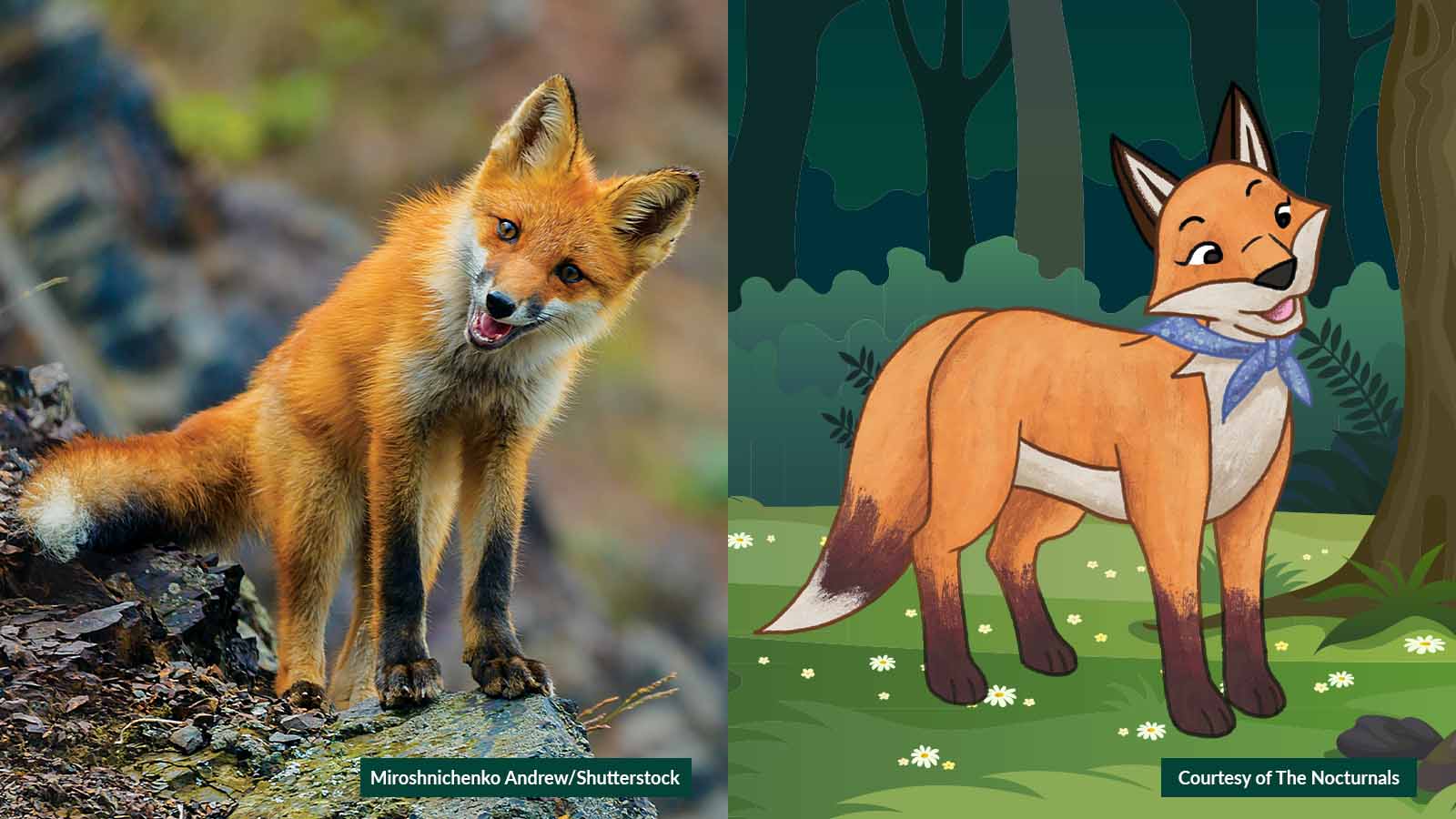Pairing fiction with nonfiction is a great way to explore a content area from different points of view. In the early grades, it can help students learn and understand the characteristics of fiction and nonfiction and the difference between them. At all grade levels, pairing fiction with nonfiction can deepen dialogue and raise the level of student inquiry during classroom discussion.
Why is pairing fiction and nonfiction important?
Many students typically gravitate toward fiction when making their own reading choices. As teachers, it’s our role to expose them to different materials, including nonfiction, to boost their literacy development. NCTE released a statement on using nonfiction in the classroom, saying, “Contemporary nonfiction for young people plays a crucial role in the reading and writing lives of K–12 students. It is a rich and compelling genre that supports students’ development as critically, visually, and informationally literate 21st century thinkers and creators.”
Choosing to pair fiction and nonfiction is an excellent way to expose students to the rich, fact-filled genre of nonfiction. Students will be immersed in the fiction genre they are already familiar with while exploring a nonfiction title that outlines a similar theme. This can also combine your standards to encourage students to make connections across multiple skills and ideas.
Here are some great ideas for pairing fiction and nonfiction in the elementary classroom:
1. Build the bridge.

Some of your readers may prefer fiction, while others gravitate to the nonfiction resources in your classroom library. Sometimes it’s the teacher who has to help students make connections between the two. Share some examples with the class such as The Nocturnals’ fiction and nonfiction pairs. For 2nd and 3rd graders, check out The Slithery Shakedown paired with The Nocturnals Presents Nighttime Animals. For 4th and 5th graders, consider the The Mysterious Abductions with The Nocturnals Explore Unique Adaptations of Nighttime Animals.
2. Pick an engaging theme.
Choose a theme or topic your students love! Chances are you can find a fiction title in your classroom or school library that can easily be tied to a nonfiction text. Or grab some new favorites. Theme ideas include:
- Animals (e.g., winter animals, reptiles, animals of Australia, bears)
- Weather (e.g., tornadoes, winter storms)
- The Human Body
- World Events (e.g., 9/11, The Great Plague, eruption of Mt. Vesuvius)
- History (e.g., Ancient Egypt, the American Revolution)
- Space
3. Create vocabulary connections.
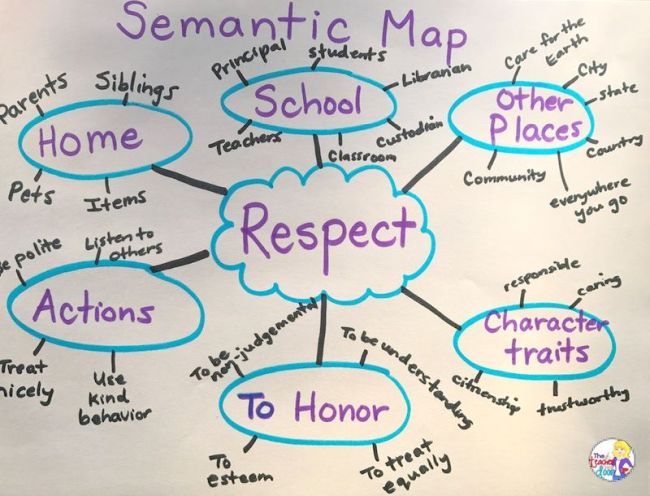
Explore similar words that appear in both your fiction and nonfiction texts. Before reading, learn what the words mean to prepare for the lesson. A word map like this might be the perfect way to discuss the words and how they are related. Then, after reading both texts, pick out where the words were used within the two and talk about how the use is similar or different. Finding words that the books have in common can help students make connections between the fiction and nonfiction readings.
4. Choose a complementary activity to go with each text.

Have students read both the fiction and nonfiction texts you choose. You may want to have students read independently or explore them as a class read-aloud. After reading the fiction text, have students complete an activity to analyze the reading. Grab these worksheets from The Nocturnals that could work with any fiction text, including problem and solution, story map, or character map!
Next, after exploring the nonfiction text, have students complete a second activity to test their understanding, such as determining facts from the reading or explaining new things they learned.
5. Separate fact vs. fiction while reading aloud.
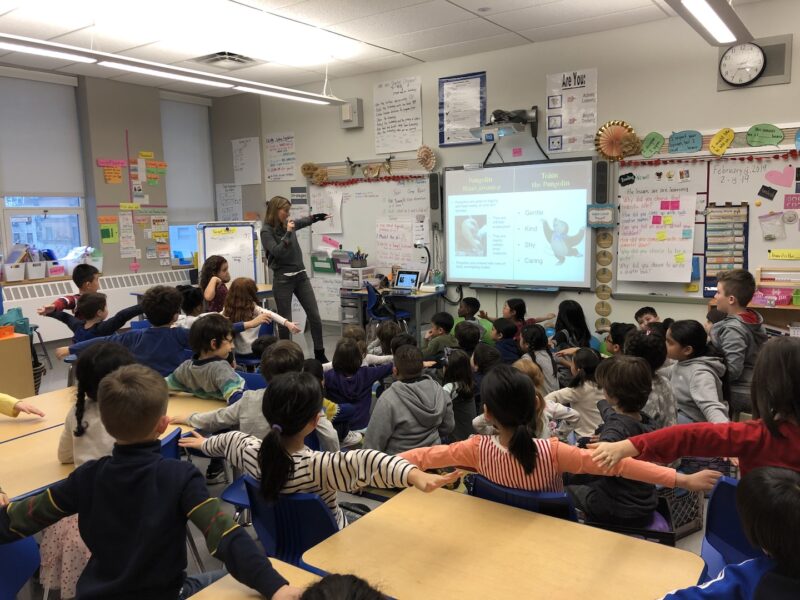
Have students create a simple T-chart with facts on one side and fiction on the other. Read the books aloud, and as students are following along, ask them to jot down the things they hear that are fact and fiction. After the activity is completed, you can discuss what students wrote and determine which title it came from.
6. Teach science through literature.
Pairing fiction and nonfiction texts is a great way to tie together science and language arts lessons. For example, The Nocturnals paired fiction and nonfiction texts are an excellent way to engage students in a fun-filled animal adventure about the unique features of nocturnal animals. Take a look at your upcoming science topics and do some exploration on book pairings that would make this idea come to life!
7. Picture books are great for mini-lessons.
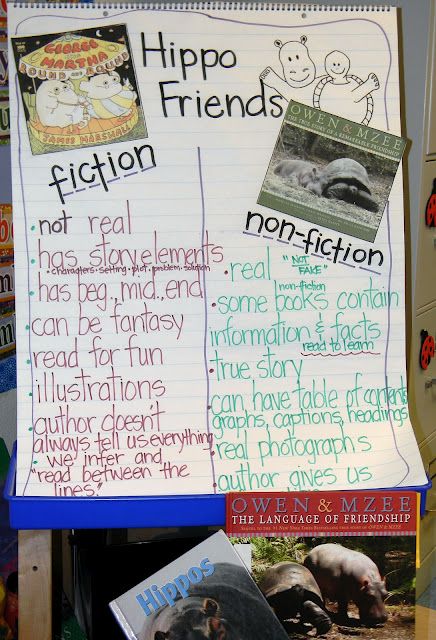
Need a lesson that will fit into one class period? Pairing picture books with nonfiction can be a perfect match. Not only can you contrast the differences between the two types of texts, you can also examine the similarities in the themes that they cover. Educator and blogger Linda Kamp did a “Hippo Friends” unit with her students where they outlined the similarities and differences between a work of fiction and a nonfiction text. They also dove into the relevant questions students had, which formed the basis for a rich classroom discussion.
8. Consider varieties of texts and keep ’em short!
Careful reading means reading things more than once. In order to have the time to discuss pairings of fiction and nonfiction, it is best to start with short texts. Shorter texts are often more accessible to students. When looking for texts, you can consider magazine articles, leveled readers, infographics, or newspapers tied to the theme of the book. Texts can go beyond traditional hard cover or paperback titles!
9. Use a graphic organizer as a visual representation.

Invite students to draw on the similarities and differences between the two texts with a Venn diagram or graphic organizer. You can grab this one from The Nocturnals for free!
10. Pair buddies who have different reading abilities.
You can pair reading buddies within your classroom or invite students from a different class or grade to partner with your students. This can be a great addition for paired read-alouds of fiction and nonfiction texts, especially for early readers with less exposure to nonfiction. If you have a buddy program at your school with older students, this is the perfect idea to integrate!
11. Compare and contrast attributes between fiction and nonfiction.
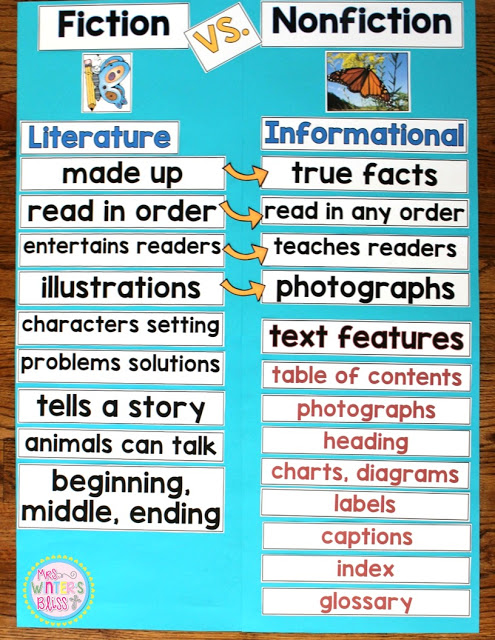
Cover the concepts and vocabulary of different types of fiction and nonfiction titles. Check out Christina Winter’s anchor chart that clearly illustrates some of the attributes of both types of texts. Plus, you can dive into the difference between fiction and nonfiction text features when pairing the two.
When searching for the perfect pair of fiction and nonfiction texts be sure to check out The Nocturnals. Your students will love these fun-filled animal adventure books with companion nonfiction for grades K-5.

